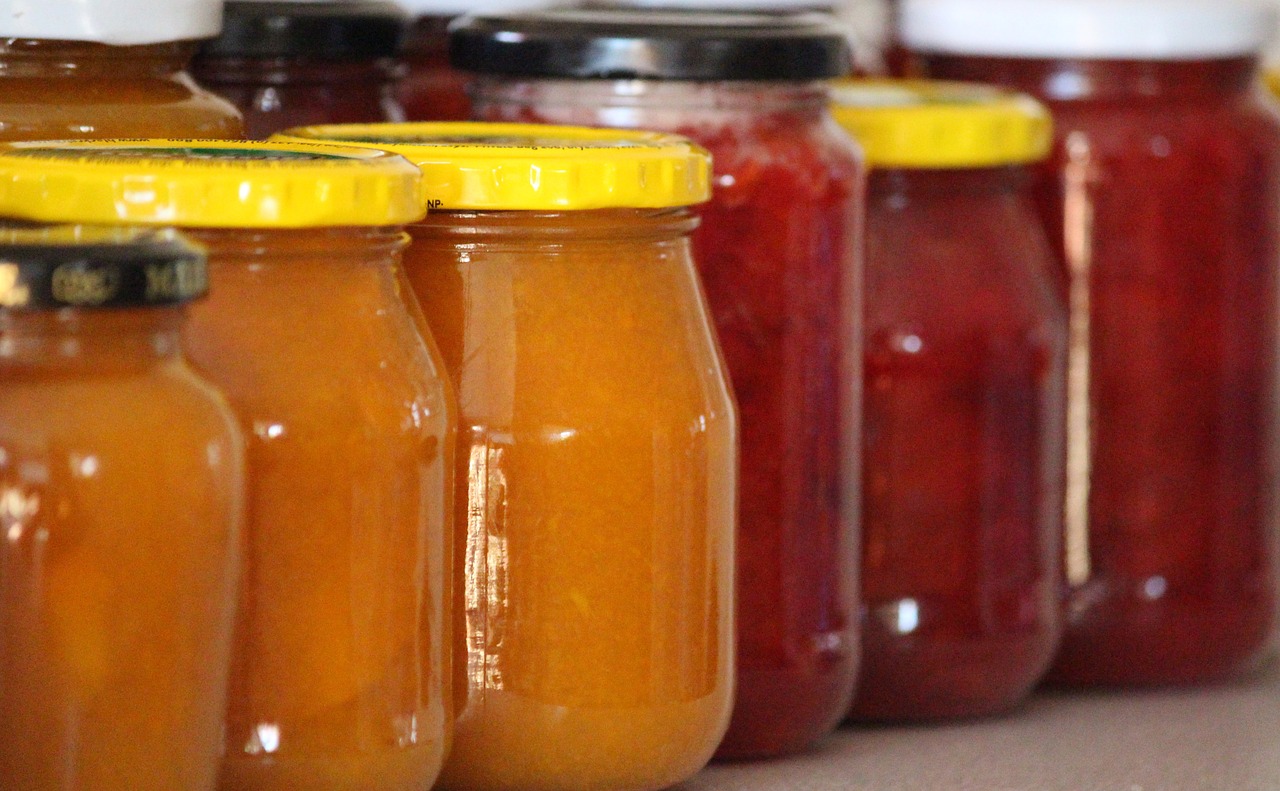Preserving and Canning in Jars
Fruit, juices and vegetables can be canned to preserve them.
Two methods are presented here:
Preserving in special preserving jars with rubber seals.
Preserving in twist-off jars.
By the way: The terms preserving, canning, boiling down and steaming describe the same process and can be used interchangeably.
Preparation
In both processes, the food is prepared, which usually means:
cleaning
possibly peeling
cutting into small pieces
Preserving in special Preserving Jars with Clamp
In the first method the food to be preserved is put into clean, sterile jars. Then, the sealing rubber and the jar lid are put on and closed with a clamp. After that, the jars are placed in a pot, which is then filled with cold water - up to the level of the preserved goods. The temperature is slowly increased until the required temperature of degrees Celsius is reached.

The harder the goods to be preserved, the higher the temperature and time.
The time needed to sterilise the preserving goods ranges from minutes. The jars must then be left in the water in the pot for a good minutes (resting time), after which they are removed and wrapped in cloths to allow them to cool slowly.
Preserving in Twist Off Jars
You can also preserve in other jars. With twist-off jars (e.g. old jam jars) the process is quite similar.
The contents can be poured in cold as above. Then the jars are sealed and placed in a pot like before. Cold water is then poured in up to the level of the preserves, reheated and boiled for about minutes.

If the preserving food is already hot when you pour it in, minutes of cooking is enough. The rest of the procedure is the same as in the upper method with the resting time and cooling down.
Provided everything has worked, the vacuum will pull the centre of the lid slightly inwards, and a distinct "plop" will be heard when you open it later.
Jam, Jelly and Syrup
By the way, jam is also boiled down!
The added sugar helps to preserve it very effectively. The jam can be brought to the boil in a pot beforehand and poured directly into sterile jars. Further boiling down is usually not necessary.
The same principle is used for jelly and syrup.
Be careful with meat and low-acid vegetables!
When preserving meat and low-acid vegetables (asparagus, green beans, tomatoes, chilli peppers, beetroot, carrots (juice) and maize), particular care should be taken. Here the toxin botulin can form. Since botulin is not recognisable by a change in taste, gas formation or smell, a core temperature of degrees Celsius must be reached when boiling down - the safest method for this is to boil down twice on two consecutive days. This is easiest to do in a steamer (pressure cooker).
Sources:
This article was translated from German.
Fig.1: Wikimedia Commons: Weck jar with spring clips from Alupus